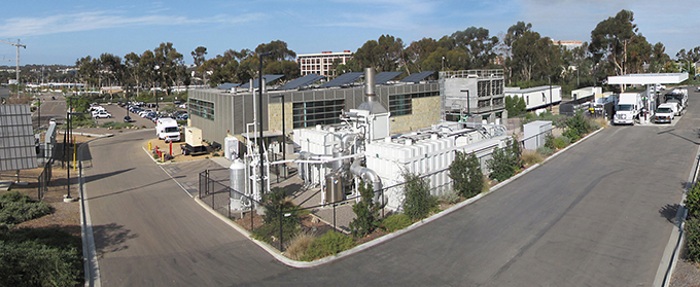The University of California, San Diego, has announced it will install one of the largest, most environmentally friendly, battery-based energy storage systems on its campus.

The 2.5-megawatt, 5-megawatt-hour system will be integrated into the school’s microgrid, which, it’s worth noting, generates 92% of the electricity used on campus annually, and is considered by and large to be one of the most advanced microgrids in the world.
The amount of power this new battery-based energy storage system will yield is enough to light, approximately speaking, 2,500 households.
It’s an impressive technology being added to a long list of other, equally impressive environmentally friendly devices the University already has in place, including:
• 30-kilowatt ultracapacitor-based energy storage system from Maxwell Technologies. The system will be combined with Soitec's Concentrated Photovoltaic Technology, which is already installed on campus.
• Second-life battery demonstration site. Although electric vehicle batteries usually only have a vehicle lifetime of eight to 10 years, they still have significant capacity left for alternative uses, such as stationary energy storage.
• 3.8-million-gallon thermal energy storage. Waste heat from the plant also is used as a power source for a water chiller that fills a 4-million-gallon storage tank at night with cold water. The water is used during the warmest time of day to cool campus buildings.
“UC San Diego is committed to practices that promote sustainability and innovation, not just on our campus, but in our community and our world,” said Gary C. Matthews, vice chancellor for resource management and planning. “Energy storage has the potential to transform the global energy landscape. It can help make renewable energy sources more reliable and is critical to a resilient, efficient, clean and cost-effective grid. We are proud to help advance this technology.”
For those unfamiliar with these technologies, a microgrid is a small-scale version of the more traditional large power grid. Typically speaking, a microgrid gets its power from clean sources like wind and solar power, as well as from conventional technology. While it can be connected to a larger grid, it is able to work independently too.
Energy storage systems, on the other hand, are technologies that convert electricity into other forms of stored energy and then convert this energy back to electricity when needed. It’s helpful when it comes to integrating intermittent renewable resources like solar and wind power. Generally speaking, energy storage systems are considered very important when it comes to enhancing grid reliability as well as grid resiliency when faced with adverse conditions (e.g., extreme weather conditions).
In fact, energy storage systems are considered so important that the California Public Utilities Commission recently established an unprecedented energy storage target: 1.3 gigawatts of energy storage is to be procured and installed by three of the state's investor-owned utilities by 2024.
As for UC-San Diego’s 2.5-MW, 5-MWh energy storage system, the technology was purchased from the world’s largest supplier of rechargeable batteries, BYD. The company’s energy system is considered cutting-edge in approach — it uses high-performance lithium-ion iron-phosphate batteries known for being highly reliable and environmentally friendly. There are no heavy metals or toxic electrolytes in the rechargeable batteries themselves, and during manufacturing all caustic and harmful materials are avoided. BYD’s batteries are also considered non-explosive and fire-safe, even when exposed to direct flames.
To date, BYD has supplied more than 100 MWh of fixed energy storage stations the world over.
“UC San Diego is renowned for their efforts in green energy production technologies and we are thrilled to partner with them,” said Stella Li, BYD senior vice president. “Together, we seek to ensure that renewable power can be utilized as a reliable generation source enabled by environmentally-friendly battery storage.”
Beyond the positive publicity, once the new energy storage system is installed in spring 2015, UC-San Diego will be eligible for up to $3.25 million in financial incentives through the Self-Generation incentive Program — a California-based rebate program that provides incentives for the installation of clean and efficient distributed generation technologies.
Via: UC Davis
Advertisement
Learn more about Electronic Products Magazine





